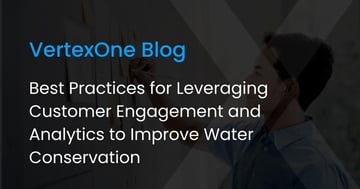The Great Resignation is real, and the utility industry is no exception. In 2021, nearly 48 million U.S. adults left jobs across numerous industries following the 2020 COVID-19 pandemic. Their reasons? Low pay, safety, work burnout, stressful schedules, lack of childcare, no room for advancement, and more.
Thousands of workers also continue to exit the utility industry each month, according to the U.S. Bureau of Labor Statistics. In fact, the areas of trade, transportation, and utility have experienced the second-highest number of employees quitting their jobs during the Great Resignation, coming in second after the leisure and hospitality industries.
Obtaining and retaining employees in the utility sector has grown increasingly difficult due to various factors that began brewing before the 2020 pandemic:
- Environmental issues and climate change have negatively impacted the public’s view of the utility industry, especially younger demographics.
- A shift away from fossil fuels and coal is changing the needs of the labor force—79,711 people currently work in the U.S. coal sector, and 17,775 are expected to retire by 2035.
How can utility workforce management help?
How can utilities address these issues and entice more employees? Selecting the right utility workforce management solution helps. Adaptive and flexible management processes are now viewed as more necessary than ever in the workplace, especially for utilities. Here are a few ways utilities can find and retain the right talent:
Utility Workforce Management 101: The Hiring Process
- Seek out employees with diverse backgrounds by utilizing social media networks like LinkedIn.
- Add permanent in-person roles to the pipeline. For example, mechanics or HVAC employees can transition their skills easily into mobile workforce management, water treatment, or field work.
- Provide free programs and on-the-job training to help potential and current employees develop skills that will allow them to advance in the company.
- Think you need to hire a new employee for a specific role? Maybe not. Can you train and promote a current employee with a similar job title and responsibilities? Doing so can help your utility save time, resources, and money.
- Encourage diversity or inclusive recruiting and create an open culture that values honest feedback.
Utility Workforce Management 101: Promotions
- Set clear expectations for employees on how to get raises, promotions, and more.
- Tap into non-monetary aspects of work through career and personality assessments to get to know your team outside of their critical tasks. Can you offer other incentives such as awards, PTO, or company-wide recognition?
- Provide transparency with teams into how investment ROI is dispersed.
- Take advantage of workforce management automation to benefit employees. Send out automated satisfaction surveys regularly to gauge the health and effectiveness of different procedures and teams.
- Schedule synchronous or on-demand training to help employees prepare for upgrades before they’re implemented. This leads to faster adoption and less frustration.
- Think beyond traditional titles. Focus on celebrating and encouraging employees to achieve more, pursue training opportunities, and collaborate effectively.
- Offer benefits like attractive healthcare and retirement packages that align with the local standard of living.
- Encourage continual industry education to make system upgrades easy to learn, making employees’ lives easier.
- Promote a healthy work-life balance by encouraging employees to take time off when needed.
Utility Workforce Management 101: Retirement and Departures
- Utilize exit and stay interviews to identify any areas in which employees are dissatisfied and understand why employees are leaving.
- When an employee retires, can automation and targeting carry out duties they were once responsible for and possibly make the transfer of knowledge smoother and more efficient?
- Implement training programs. Maintain a steady stream of assistant or manager-in-training positions to encourage promotions when retirees exit the company. Develop a mentor and mentee program that requires at least a year or two of on-the-job learning.
How can automation benefit your utility?
For field workers and in-office employees, the right mobile workforce management solution (like VertexOne) provides numerous benefits. These benefits extend from the employee to the customer. When processes are beneficial for one, they are beneficial for all.
Click here to learn more about how modern integrations and customer expectations have redefined the role a customer information system (CIS) plays in a utility.




